In the heat of battle, Civil War doctors often had to make quick diagnoses of soldiers’ injuries. According to The Medical and Surgical History of the War of the Rebellion, 1861-65, 70% of all wounds were to the extremities—35.6% to the upper extremities and 35.2% to the lower extremities. These statistics help explain why surgeons performed so many battlefield amputations; if they couldn’t save the limb, they wanted at least to save the soldier’s life.
When deciding whether or not to amputate a limb, a cursory probe of a wound was often the only examination a doctor had the time (or the ability) to conduct before beginning surgery. The high frequency of amputation was often attributed to the damage created by minié balls, which shattered bones and mangled tissue, but the high risk of bleeding, infection, and gangrene were deciding factors as well. By war’s end, Union and Confederate surgeons had performed an estimated 60,000 amputations.
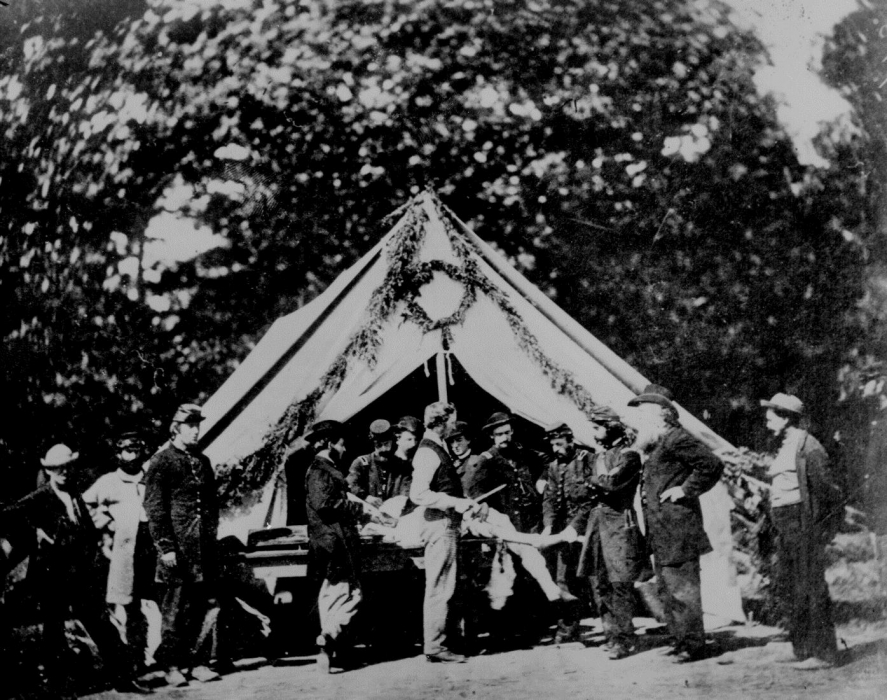
Though staged after the war, this image is one of the few existing photographs of a Civil War era amputation surgery. This “surgery” was staged outside of a Gettysburg hospital tent. (Image credit: Library of Congress. Unless noted otherwise, all subsequent images are also from the Library of Congress.)
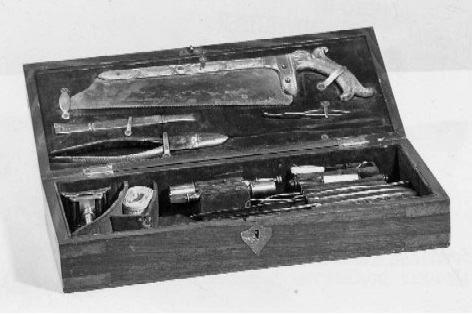
Dr. George Fordyce Newell’s medical kit (above) was typical of that used by a Civil War surgeon. At a minimum, these kits consisted of two surgical saws, cutting pliers, a curved probe, clamps, a retractor, a brush, and trepanning instruments. Surgeons would use the probes to inspect a wound before using the clamps, retractor, and saws for the amputation surgery itself. (Burlington Historical Society.)
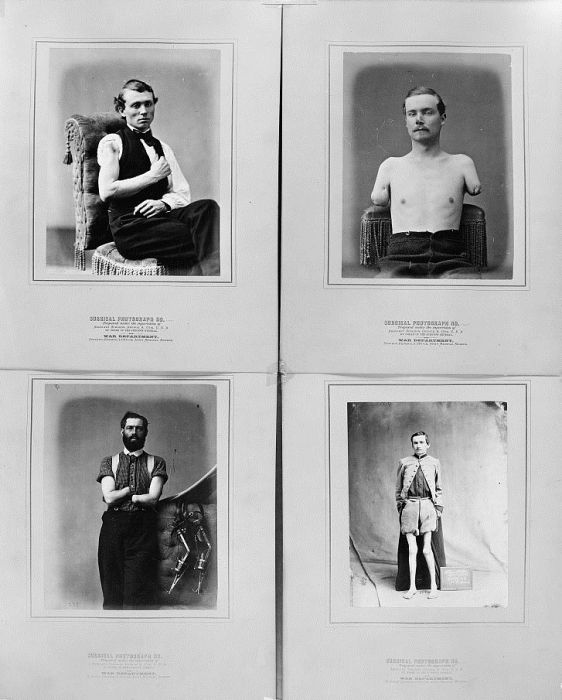
This series of photographs, compiled by the U.S. Surgeon General’s Office, illustrates the different types of arm amputations. During the Civil War, surgeons performed two types of amputation: circular and flap. A circular amputation involved rolling the tissue and skin up like a cuffed sleeve before cutting the bone. Afterward, the doctor would roll the “cuff” back down, sew it together, and create a stump. A flap amputation entailed creating two long flaps of skin and tissue that were folded and sewn over the cut bone. The soldiers depicted above are Private John Brink of the 11th Pennsylvania Cavalry (top left), Sergeant Warden (top right), Private Samuel H. Decker of the 9th U.S. Artillery (lower left), and Drummer Allison Shutte of the 7th Pennsylvania Reserves (lower right).
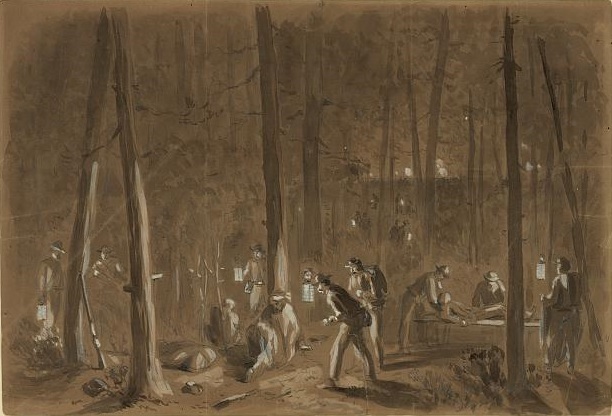
In this William Waud drawing, hospital attendants collect the wounded after a skirmish. In most cases, multiple aides assisted physicians with their amputation surgeries. One assistant would administer an anesthetic to the patient while another held the main artery closed. A third would support the limb as the doctor performed the surgery. Afterward, the helpers would tie the arteries closed while the doctor sewed up the stump.
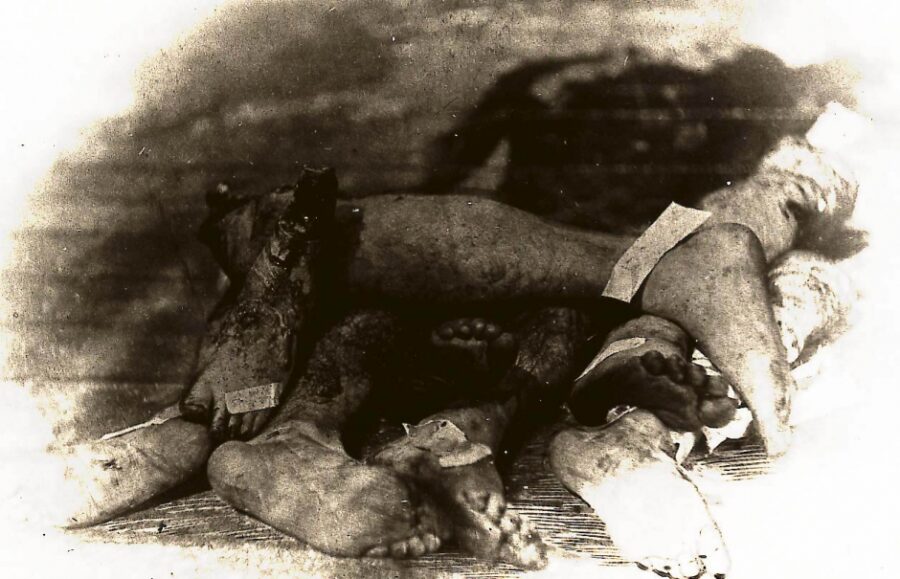
Because amputated limbs had to be discarded after the surgery, a false imagery of “butcher” doctors surrounded by piles of arms and legs soon arose. As Dr. Jonathan Letterman, the Army of the Potomac’s medical director and “the Father of battlefield medicine,” explained, “Gross misrepresentations of the conduct of medical officers have been made and scattered broadcast over the country, causing deep and heart-rending anxiety to those who had friends or relatives in the army.” In truth, some inexperienced and incompetent surgeons did exist, but the majority of doctors performed their surgeries with skill and efficiency, ensuring high survival rates. (National Museum of Health and Medicine.)
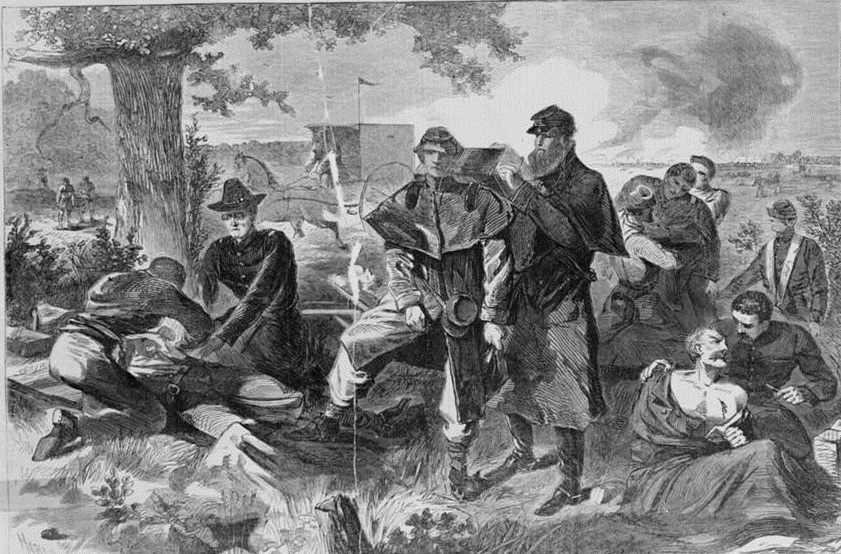
Entitled “The Surgeon at Work at the Rear During an Engagement,” this Harper’s Weekly drawing illustrates the grim realities of Civil War medicine. Many amputations occurred on the battlefield. With assistance, doctors might perform these surgeries in as few as two minutes.
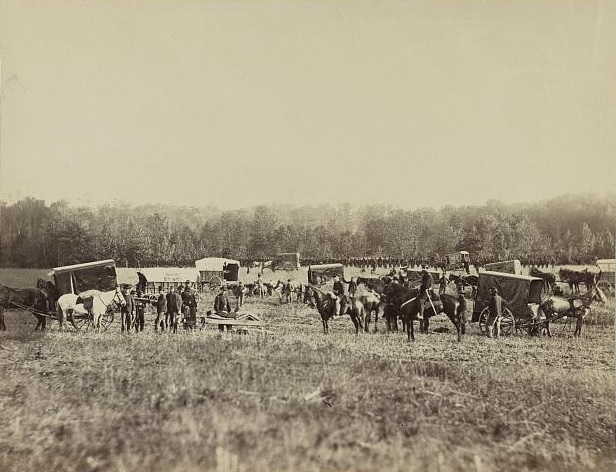
After an amputation, the wounded soldier would travel via ambulance and/or rail to a hospital away from the fighting. These bumpy rides often exacerbated the soldier’s pain, exposing him to the elements, extreme temperatures, and long travel without painkillers. The image above is of an ambulance train, 1st Division, II Corps, Army of the Potomac.
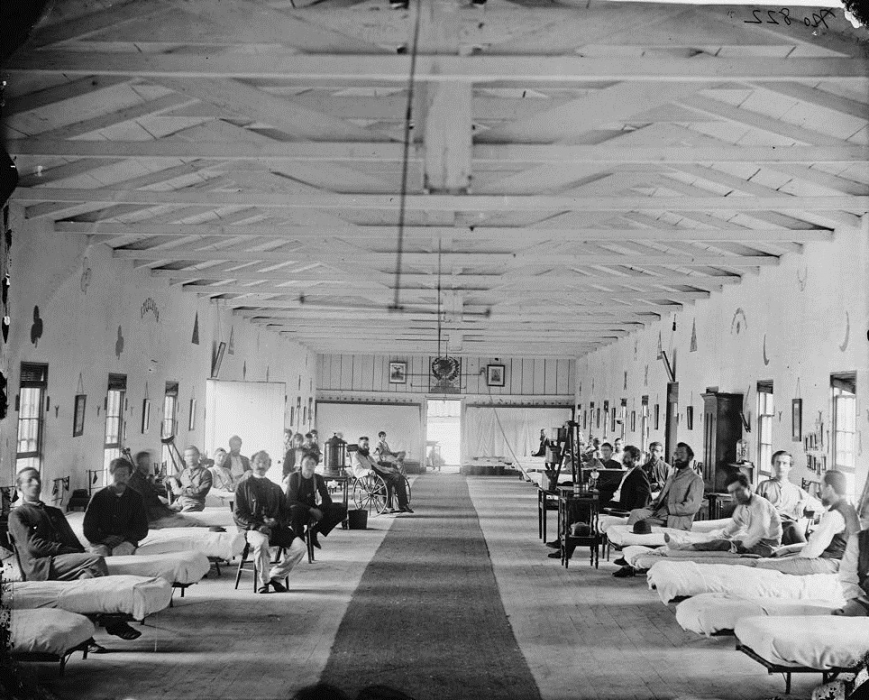
Once treated, amputees often convalesced in one of the many makeshift wartime hospitals—such as the Armory Square Hospital in Washington, D.C. (pictured above). Surrounded by comrades suffering from gangrene, dysentery, or other diseases, amputees would heal before returning home or back to military service.
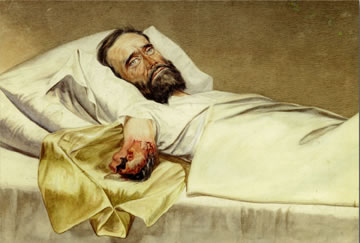
This drawing of Union soldier Milton E. Wallen highlights the dangers of amputation surgery. After having his arm removed by Confederate doctors, Wallen headed toward Union lines for medical attention. While recuperating at the Navy School Hospital in Annapolis, Wallen’s stump became infected with gangrene. “Hospital gangrene” was a chronic problem during the war. A small black spot would appear in the wound and slowly expand, resulting in loosened skin, necrosis of body tissue, and corresponding putrid smells. The likelihood of gangrene increased the longer an amputation surgery was delayed—thereby increasing the likelihood of death post-surgery. However, by 1864, Union surgeons learned to control gangrene by pouring carbolic acid—a painful but effective antiseptic—over the infection. (National Museum of Health and Medicine.)
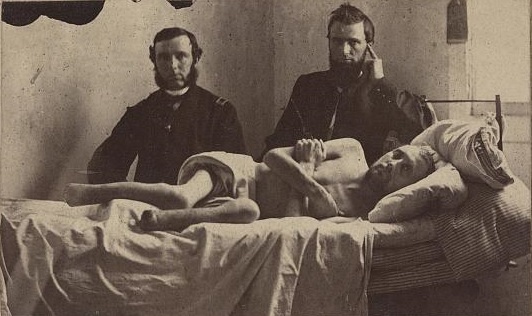
This photograph of Corporal Calvin Bates of Co. E, 20th Maine Infantry, reminds us that not all amputations resulted from bullet wounds. A prisoner at Andersonville, Bates suffered inhumane treatment at the hands of his prison guards. His maltreatment resulted in illness, decay, and ultimately the amputation of his feet.
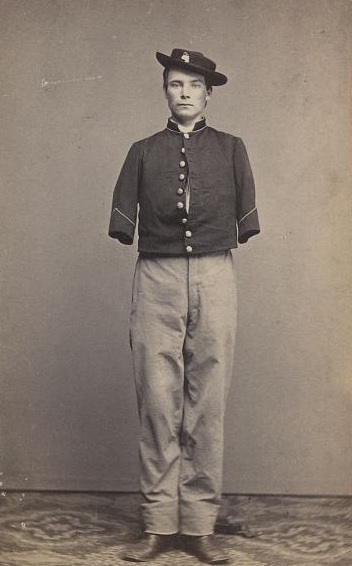
Many soldiers, like Private William Sargent of Co. E, 53rd Pennsylvania Infantry (above), continued to don their uniforms after their amputations. Federals and Confederates alike worried about the immoral and idle behavior that would arise if disabled soldiers did not return to work and provide for themselves. The creation of the Invalid Corps (later renamed the Veteran Reserve Corps) allowed amputees and other wounded soldiers to serve as aides to the army—cooks, nurses, or prison guards—or to return to combat if their injuries were not too severe.
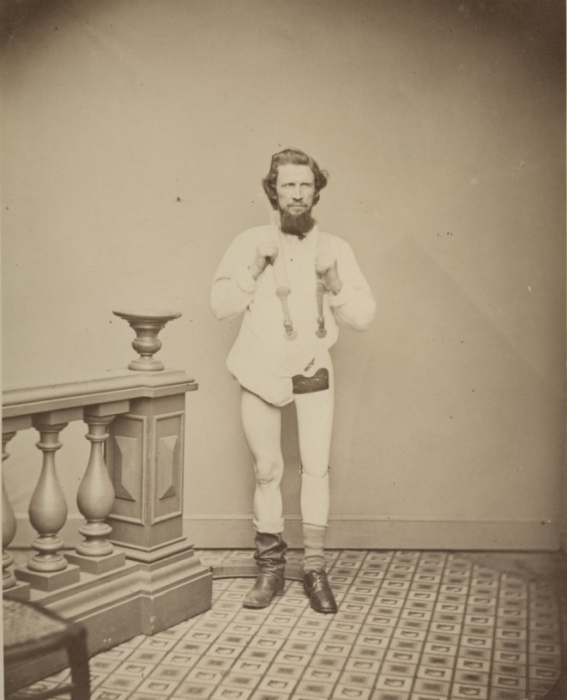
Private George W. Lemon (above) was among the soldiers who elected to use a prosthesis. As early as 1862, the Union government began allocating resources for wounded veterans to purchase an artificial arm or leg. Several Confederate states followed suit in 1864. Payments of $50-$75 covered the cost of the prosthesis as well as any required travel to have the soldier outfitted with his new limb. (National Library of Medicine.)
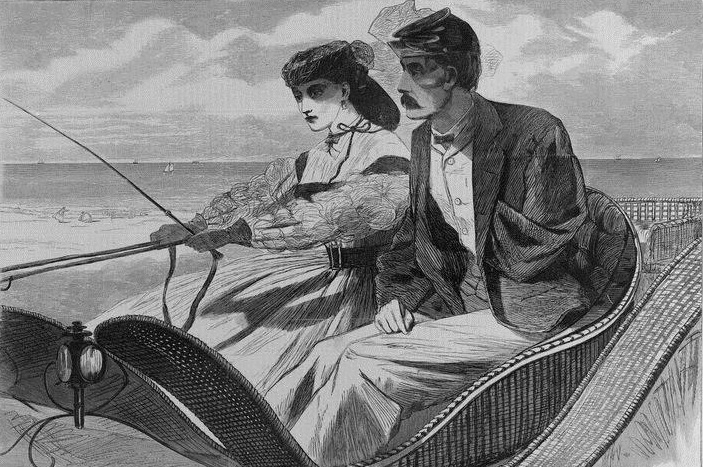
The empty sleeve became a symbol of the postwar era. By pinning up a shirt sleeve or trouser leg, war veterans emphasized their sacrifices, mettle, and manhood. Some amputees—like Lucius Fairchild of Wisconsin and Francis R. T. Nichols of Louisiana—even utilized their injuries to garner votes and gain political office. The above drawing by Winslow Homer uses the image of the empty sleeve to symbolize the great changes ushered in by the Civil War: distorted bodies, altered gender relations, and newfound freedoms. (Harper’s Weekly.)
Related topics: medical care

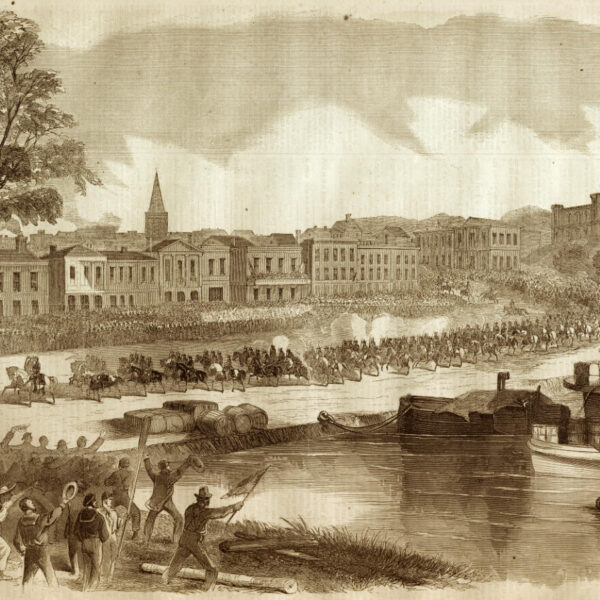
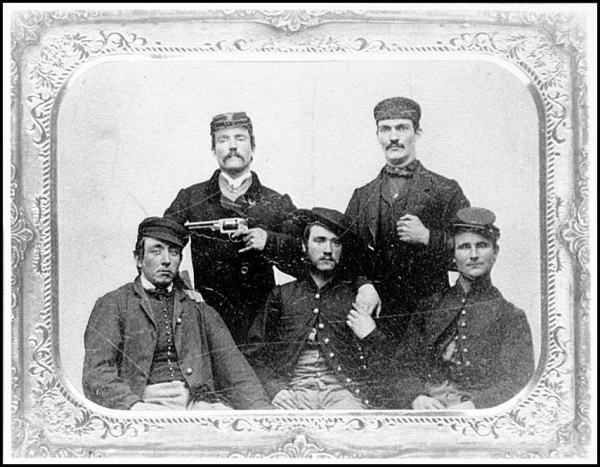
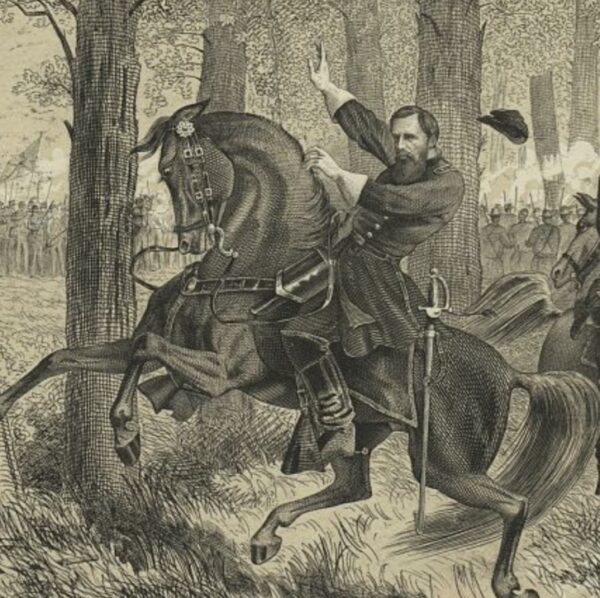
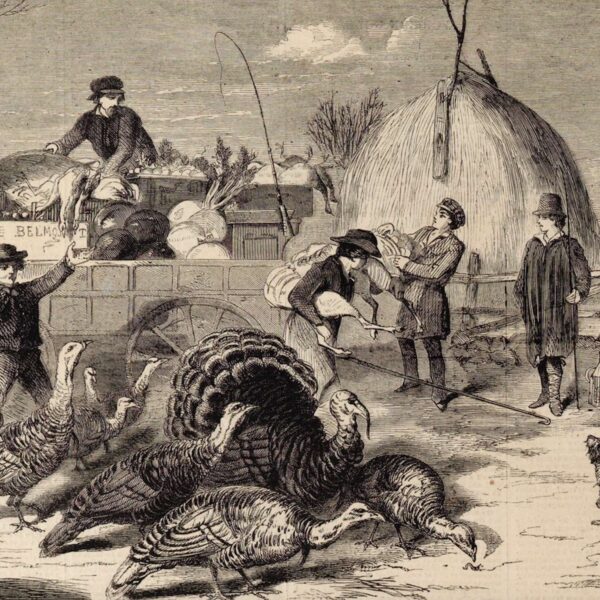
We should never forget the heroic efforts of the medical corps.